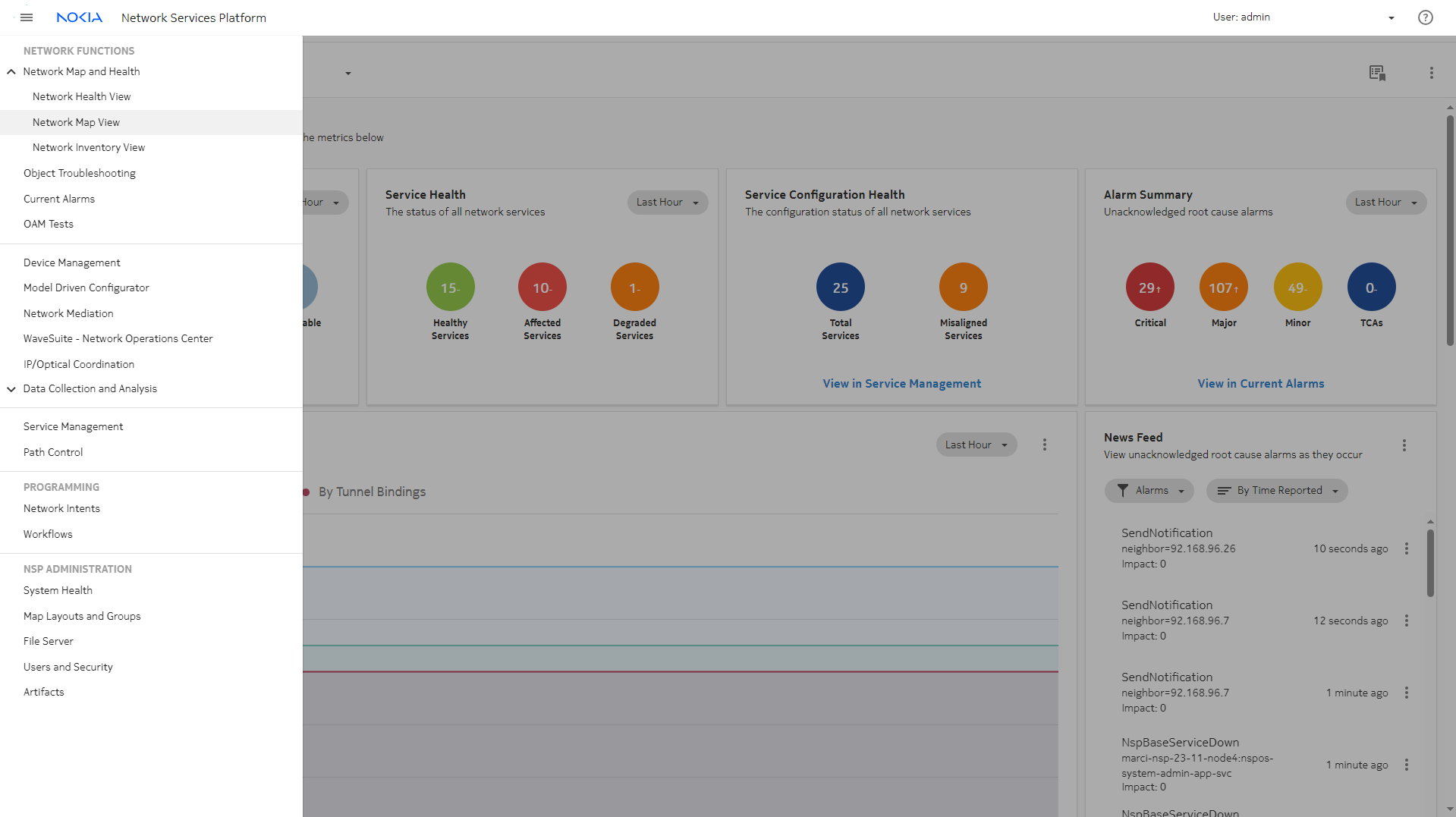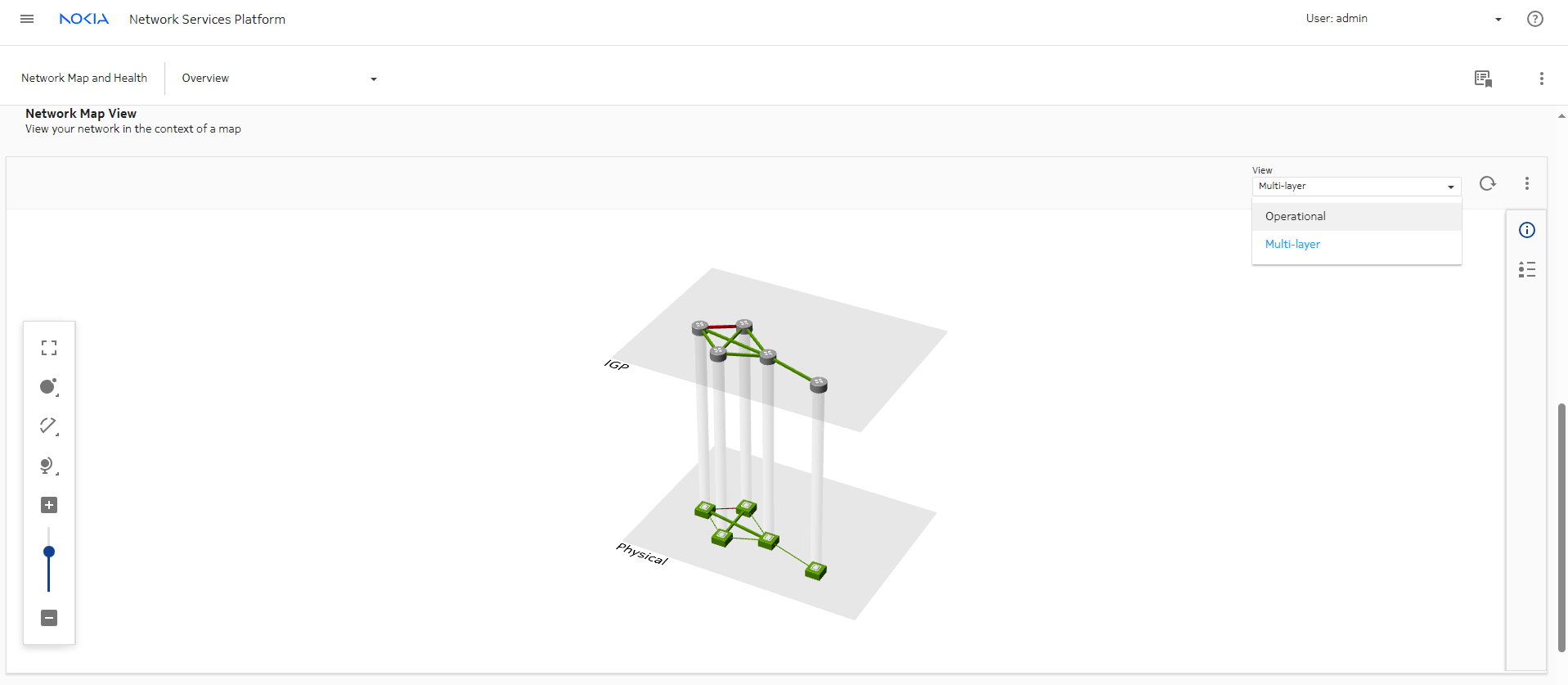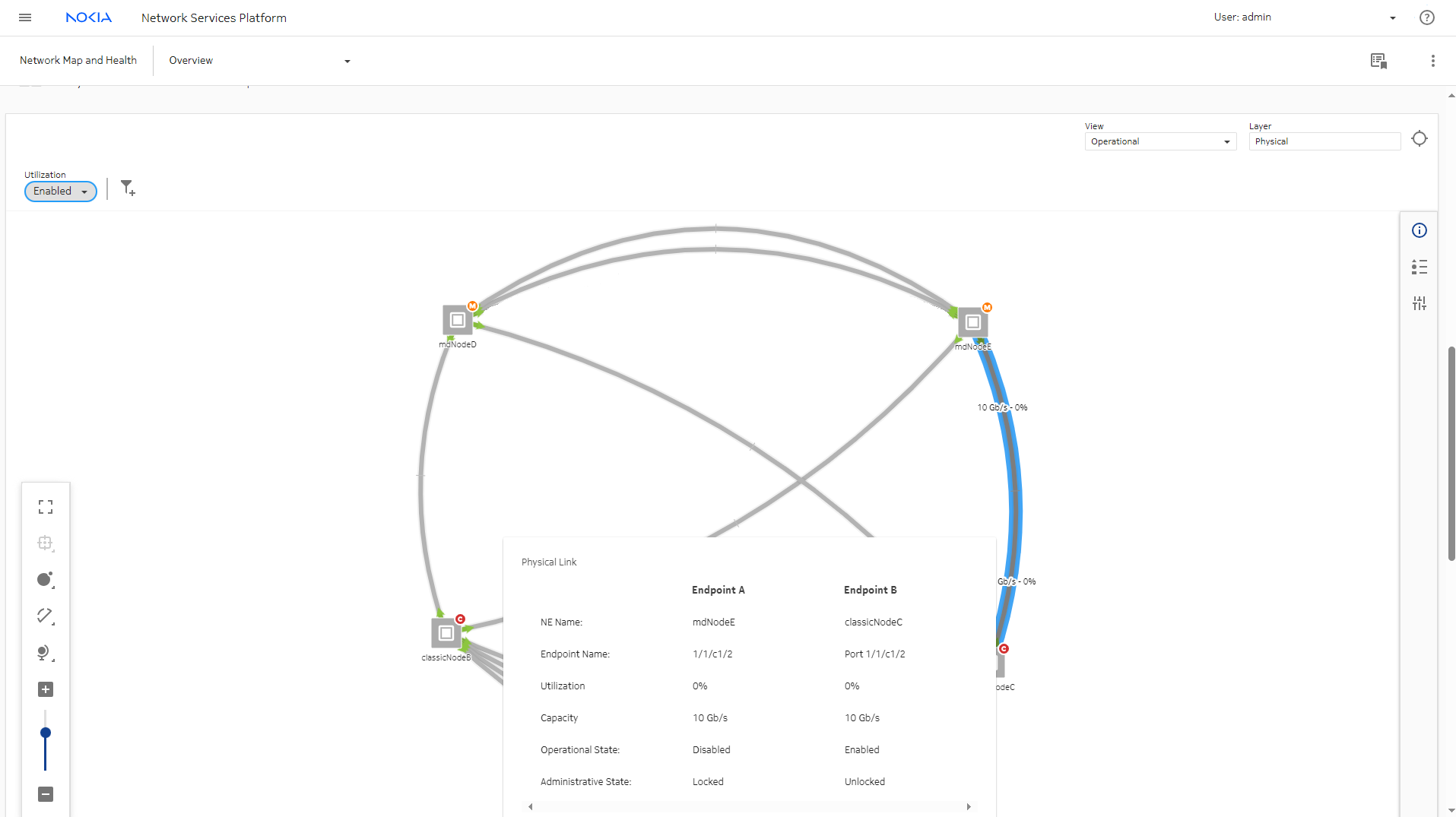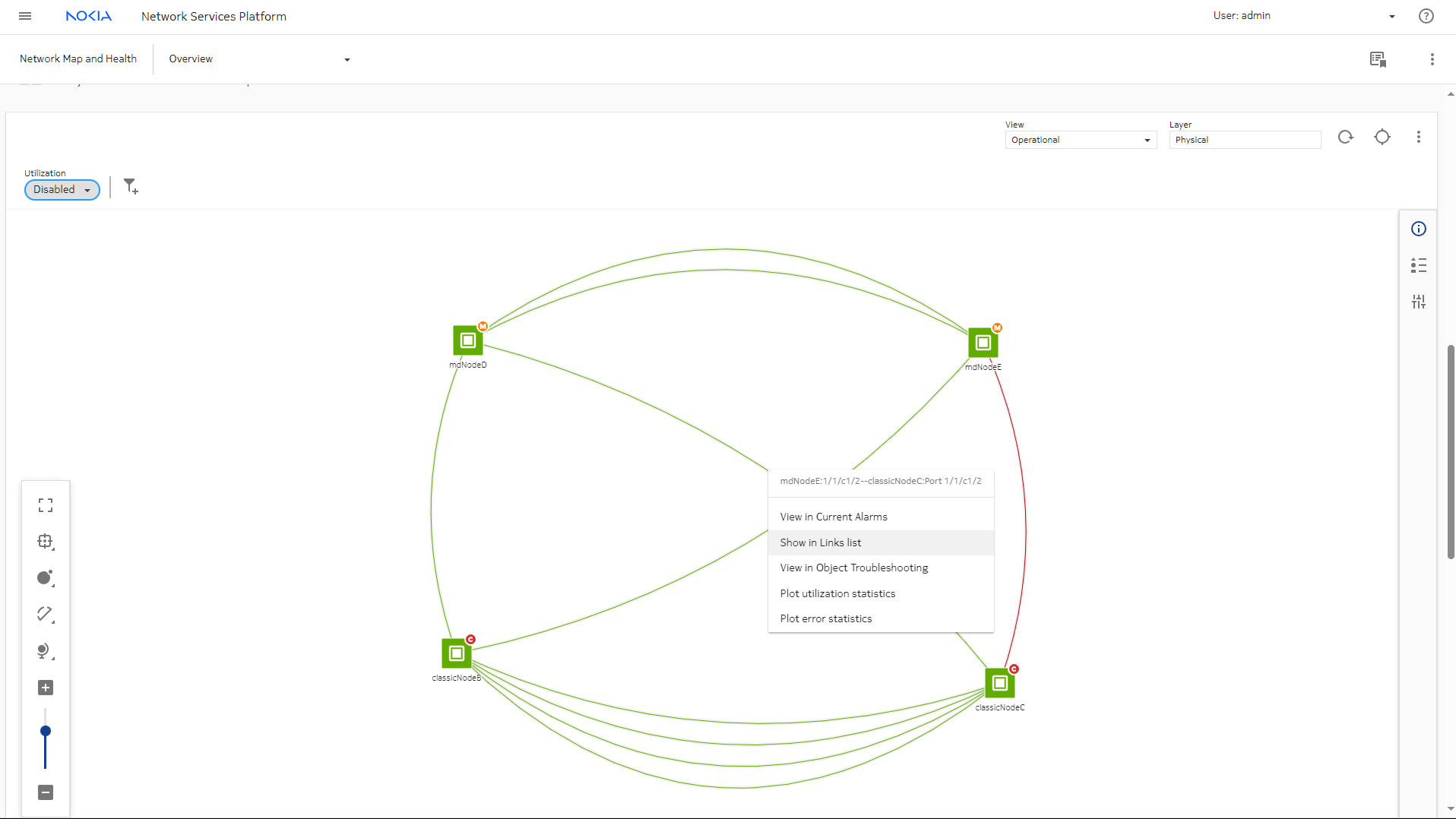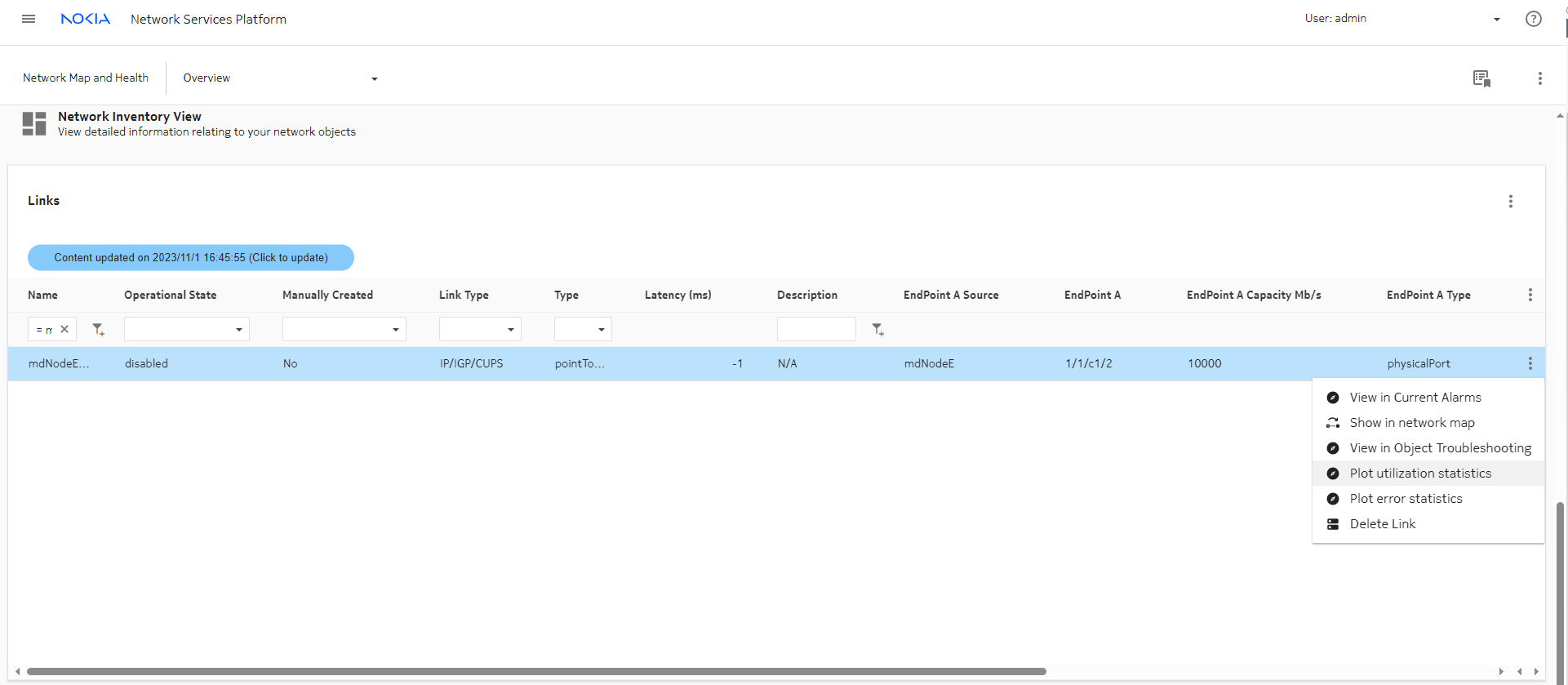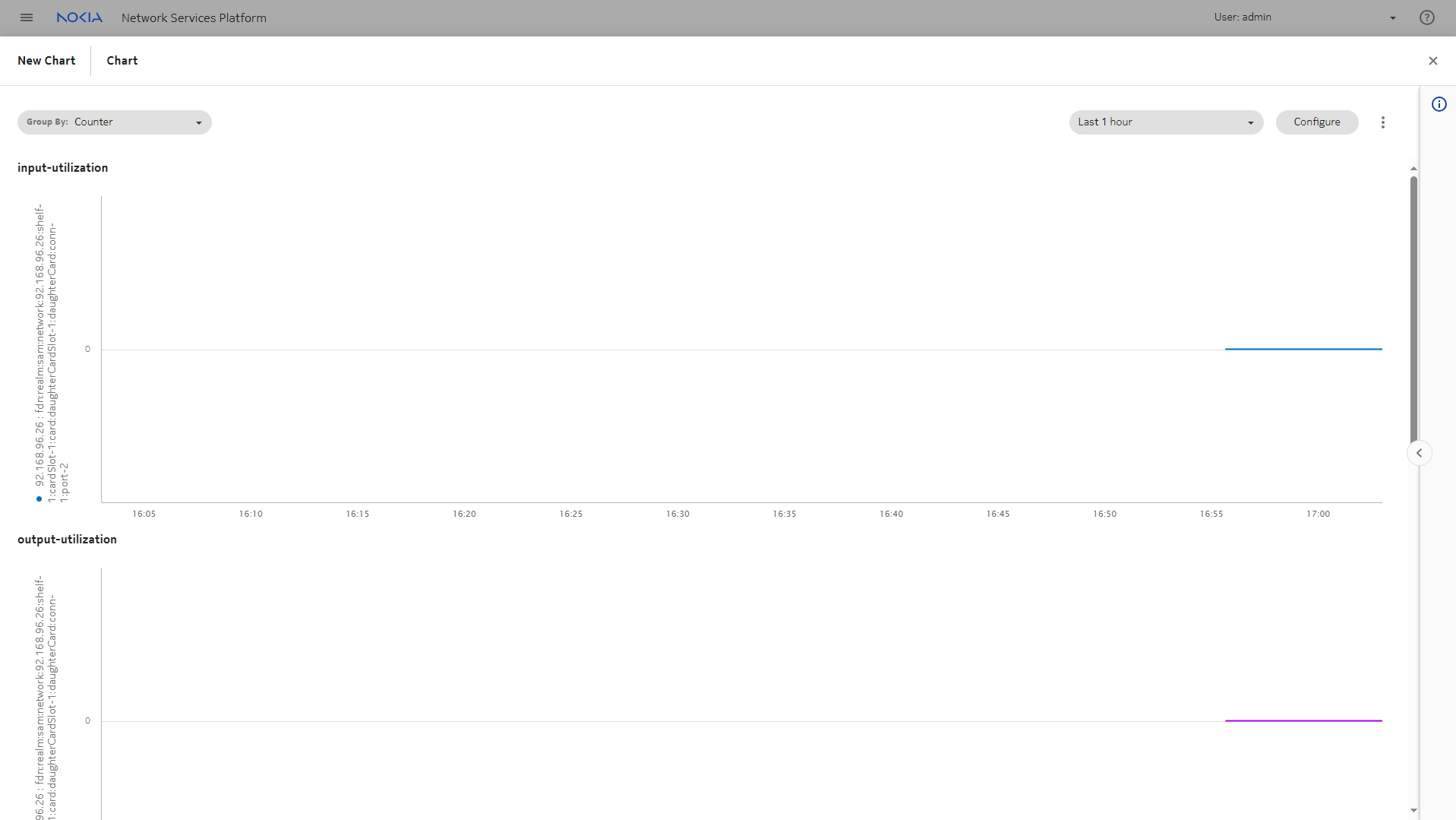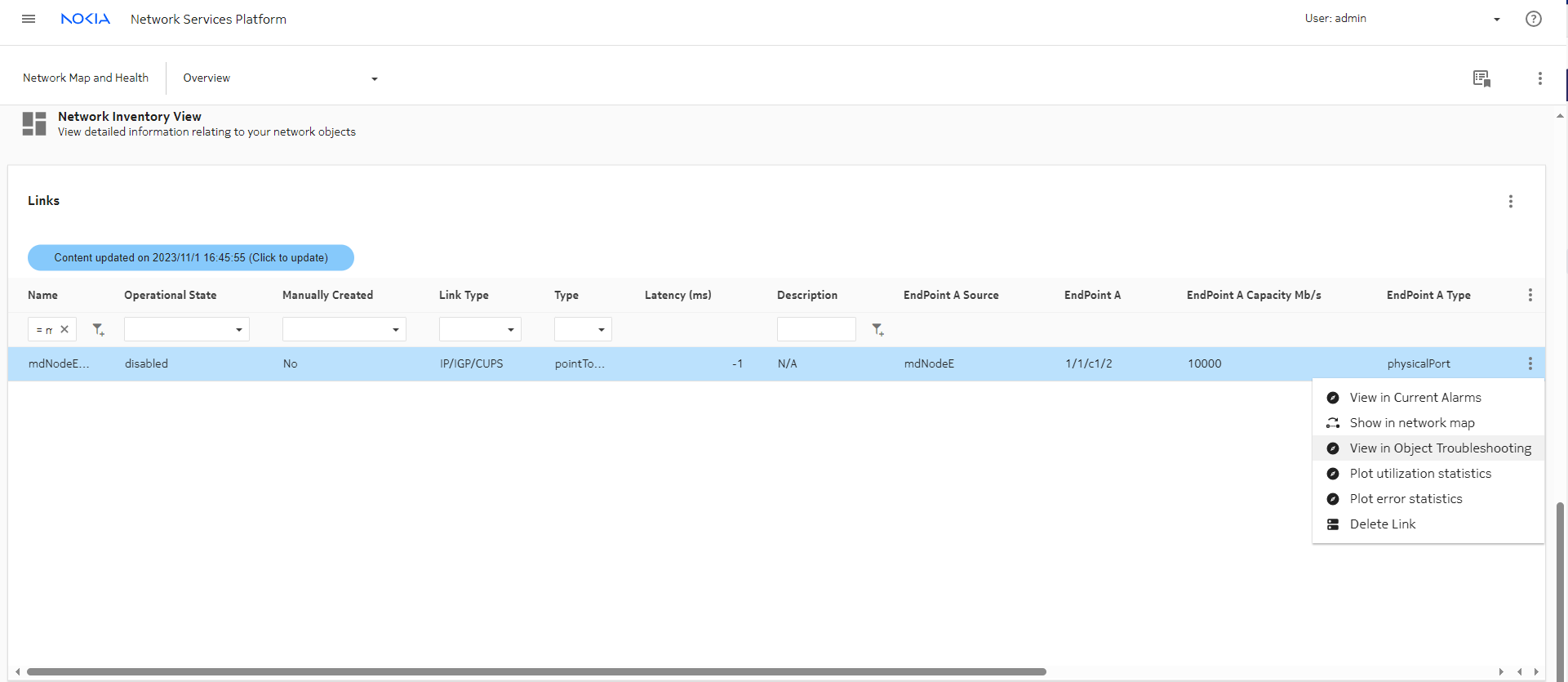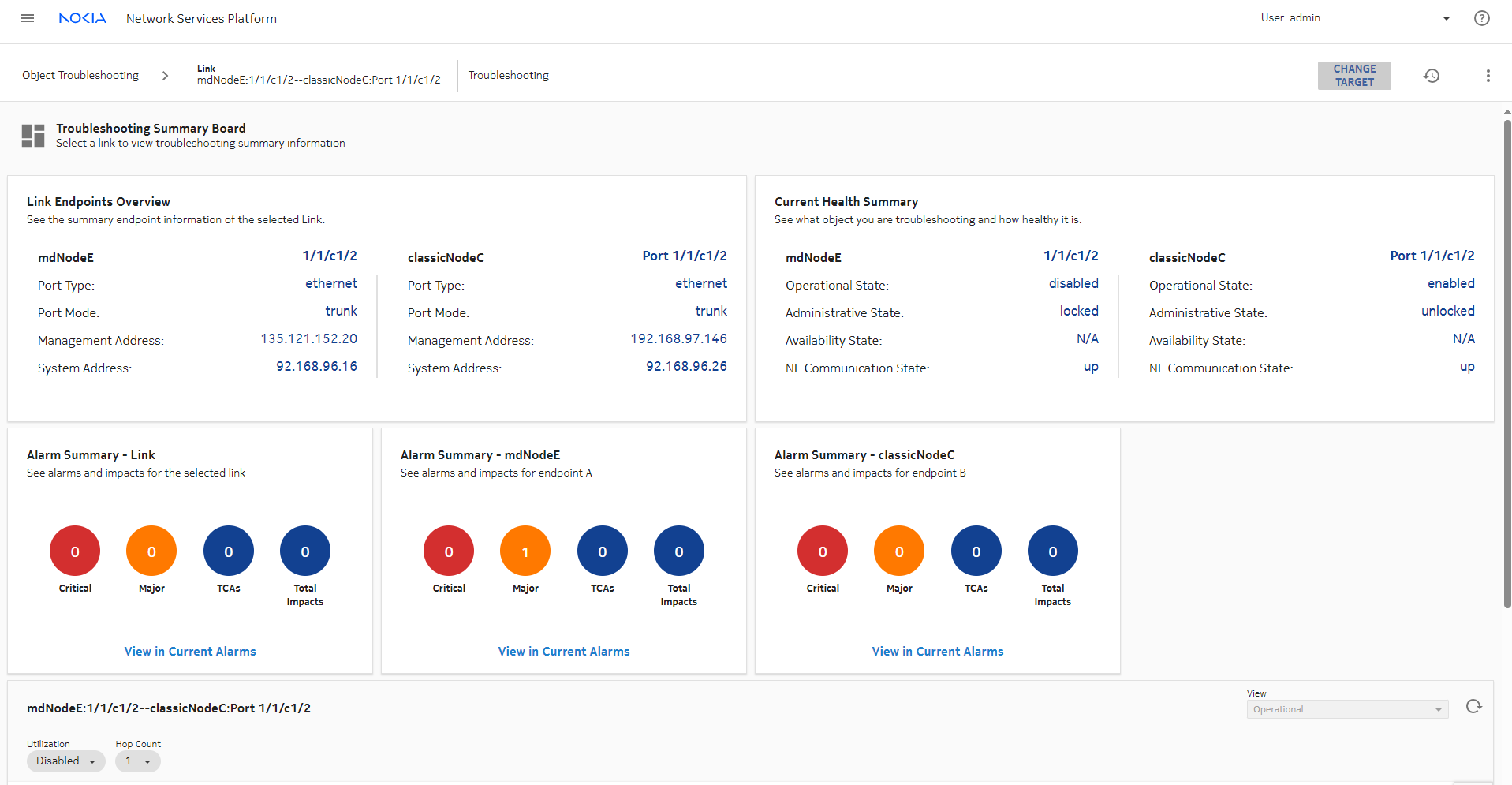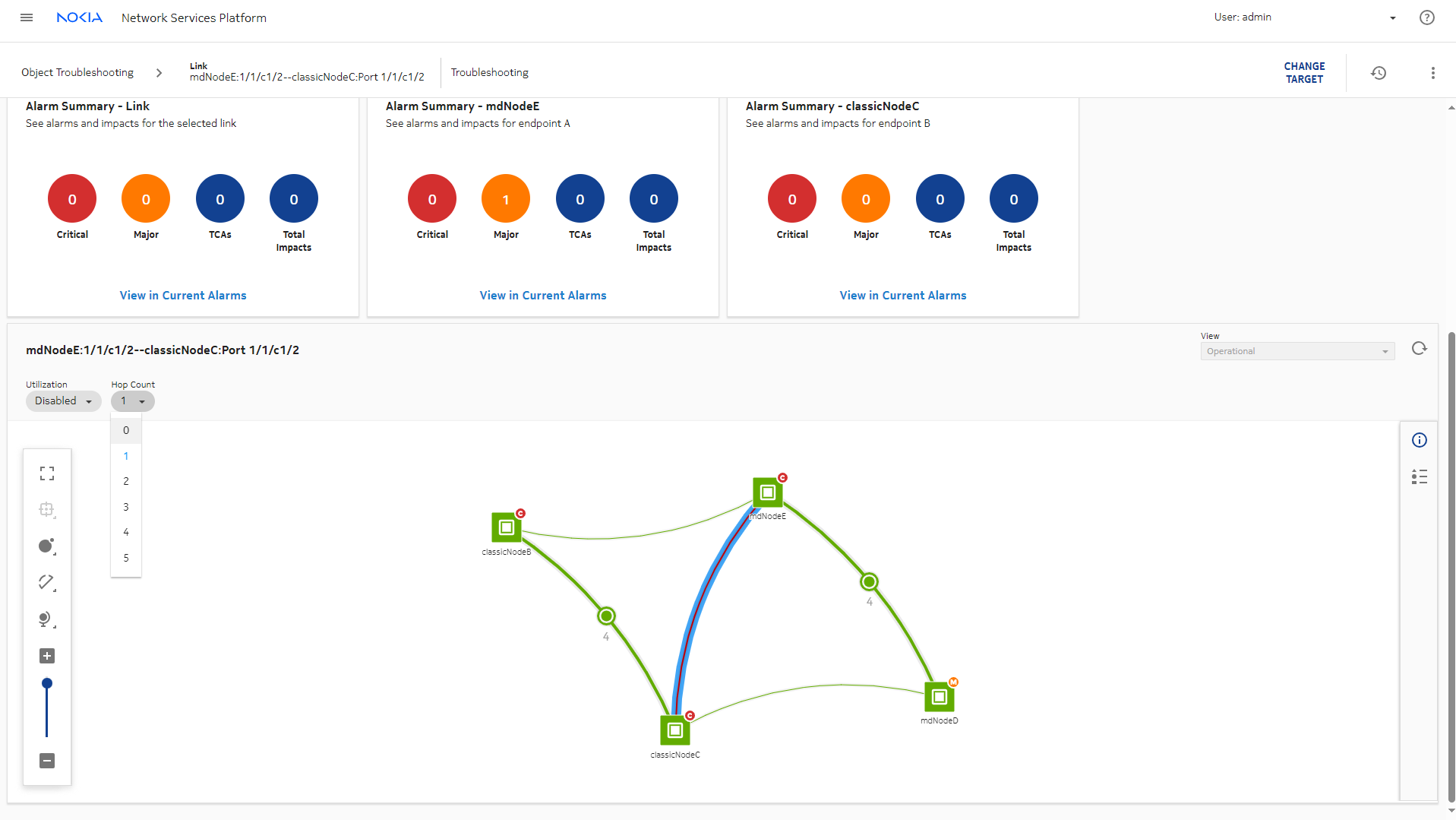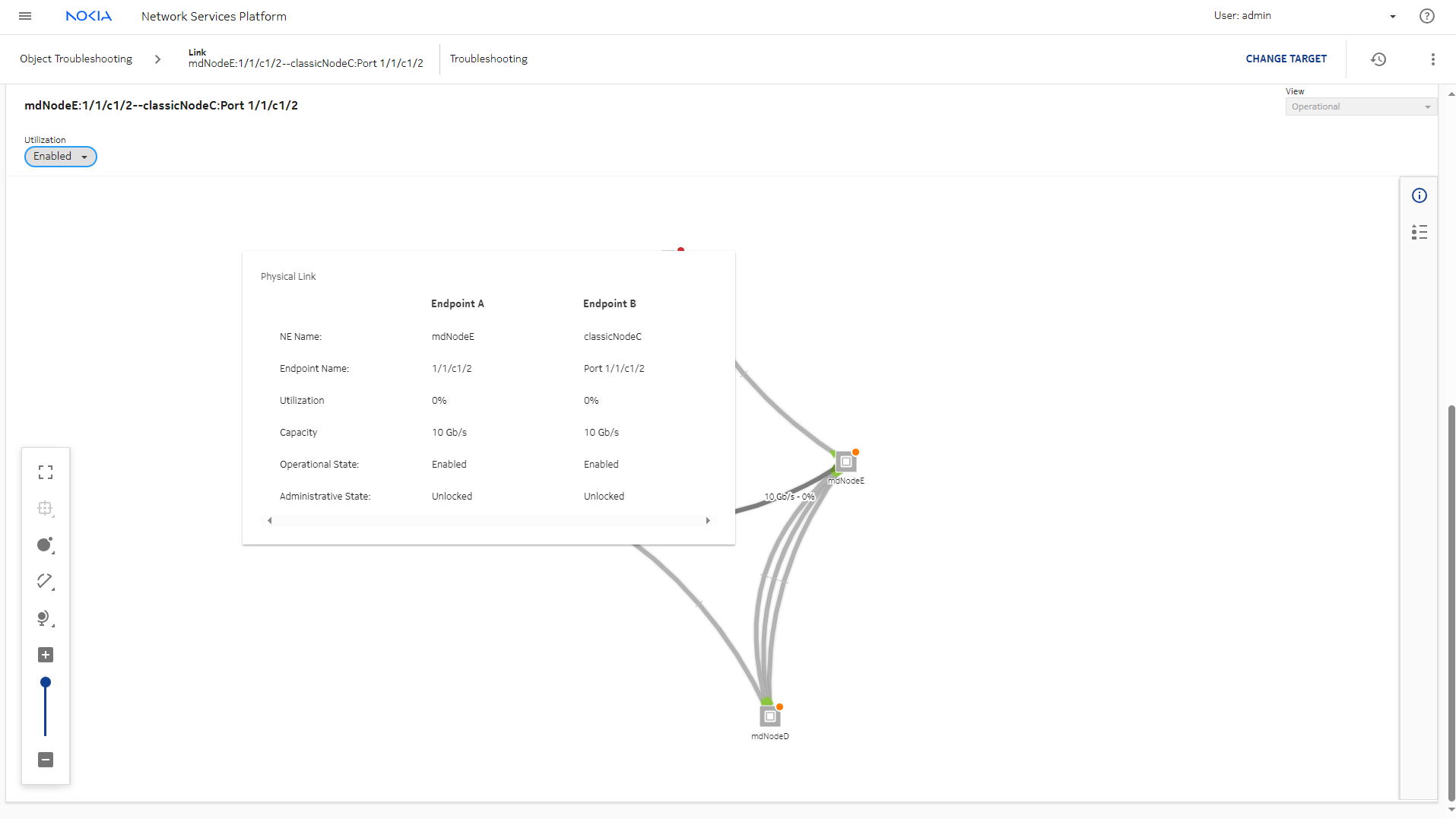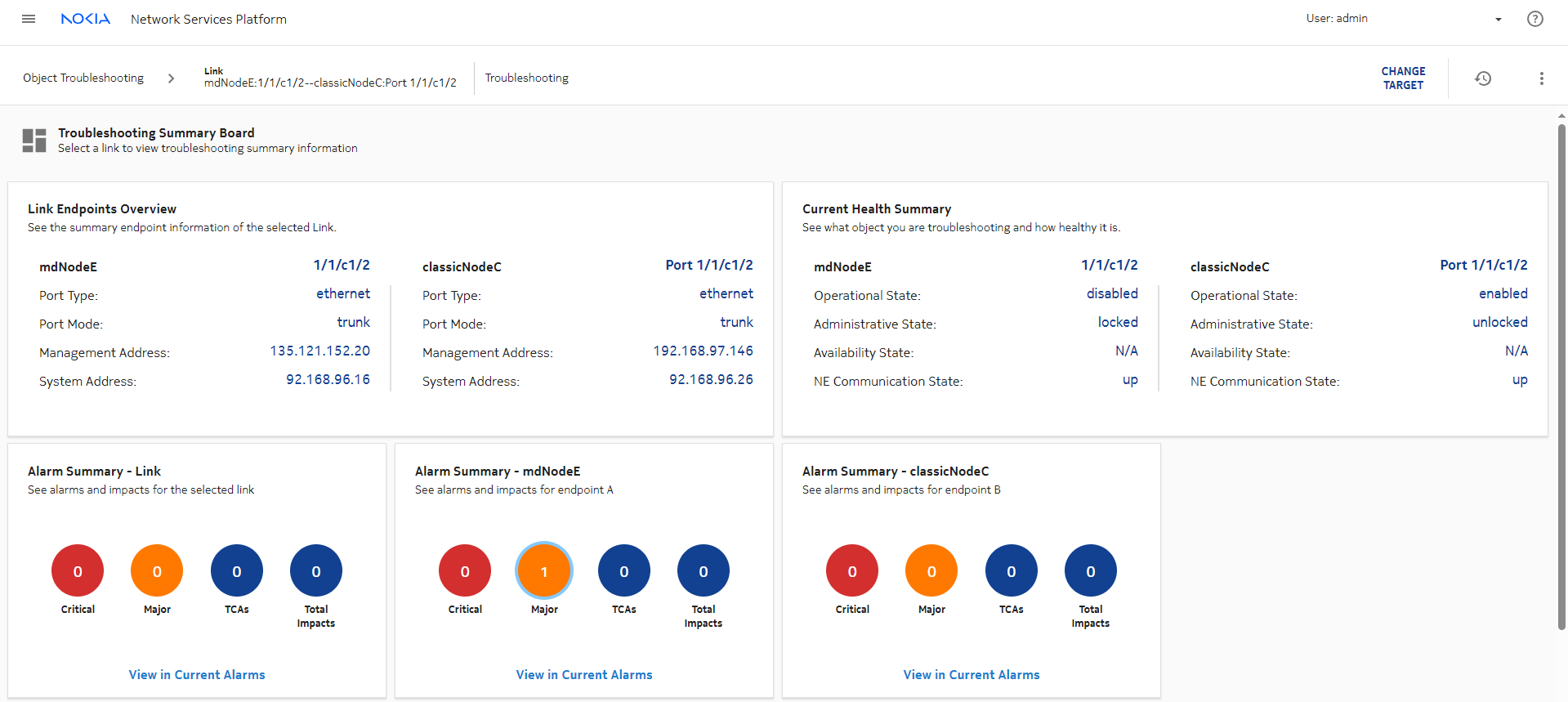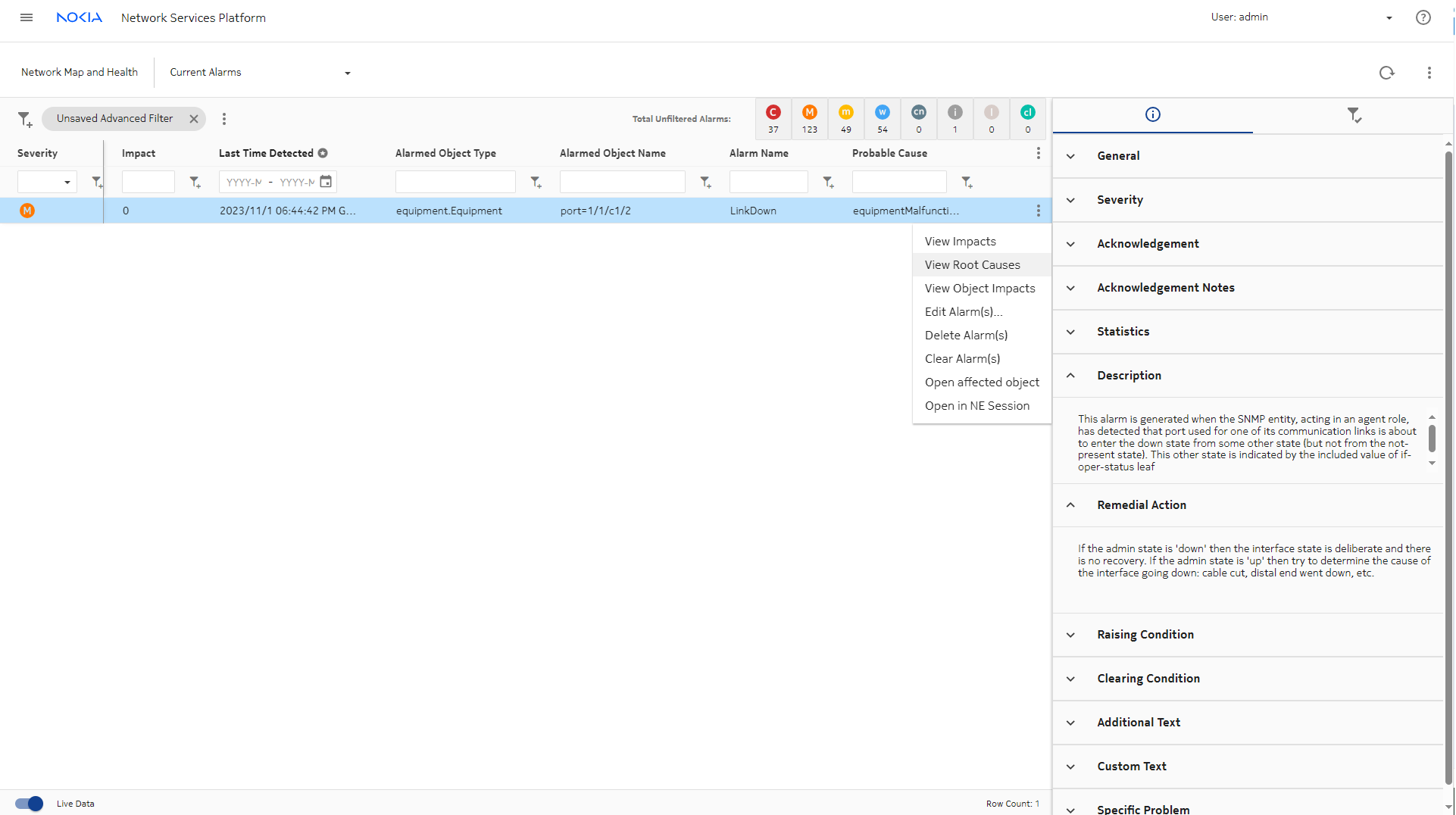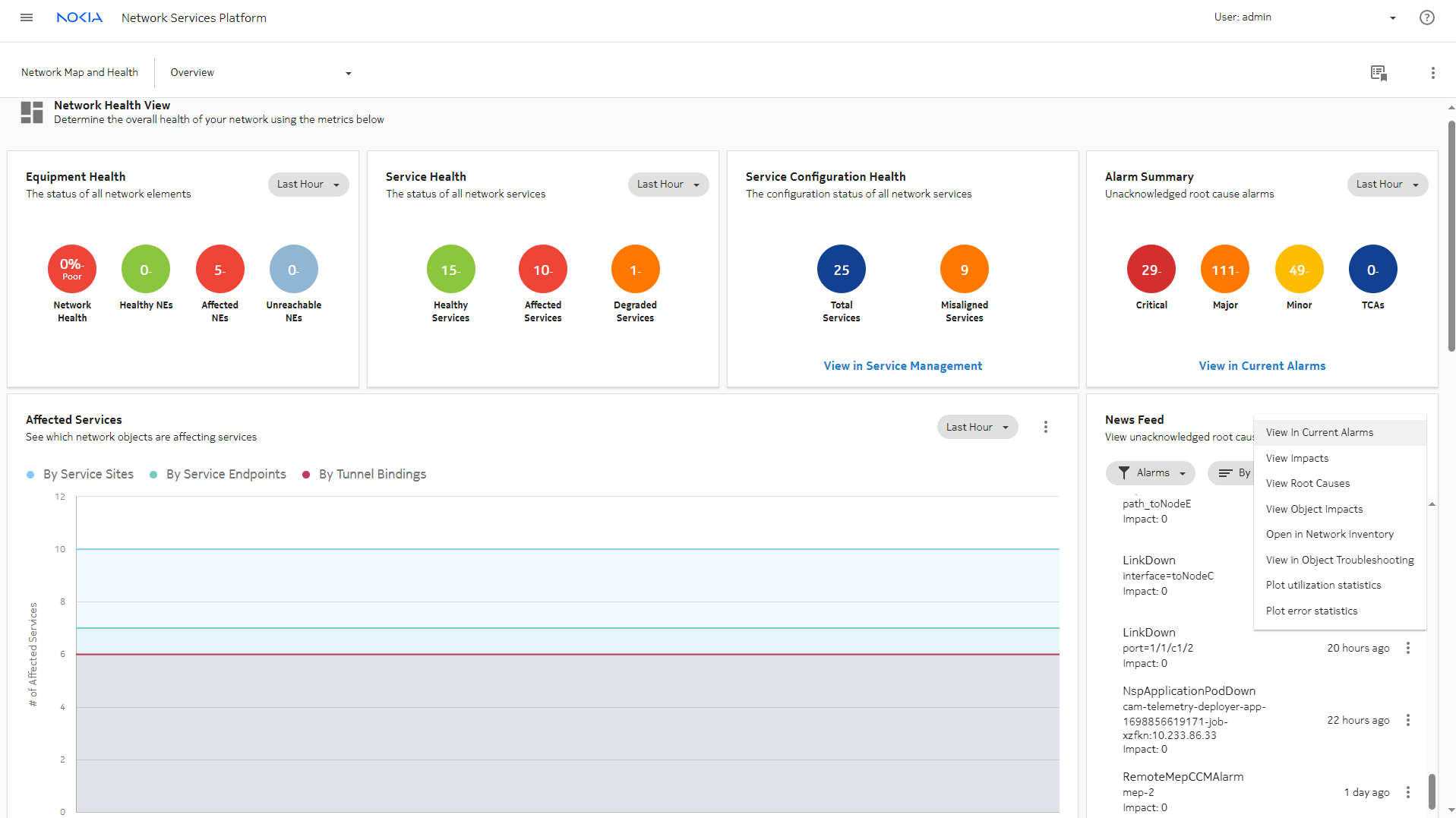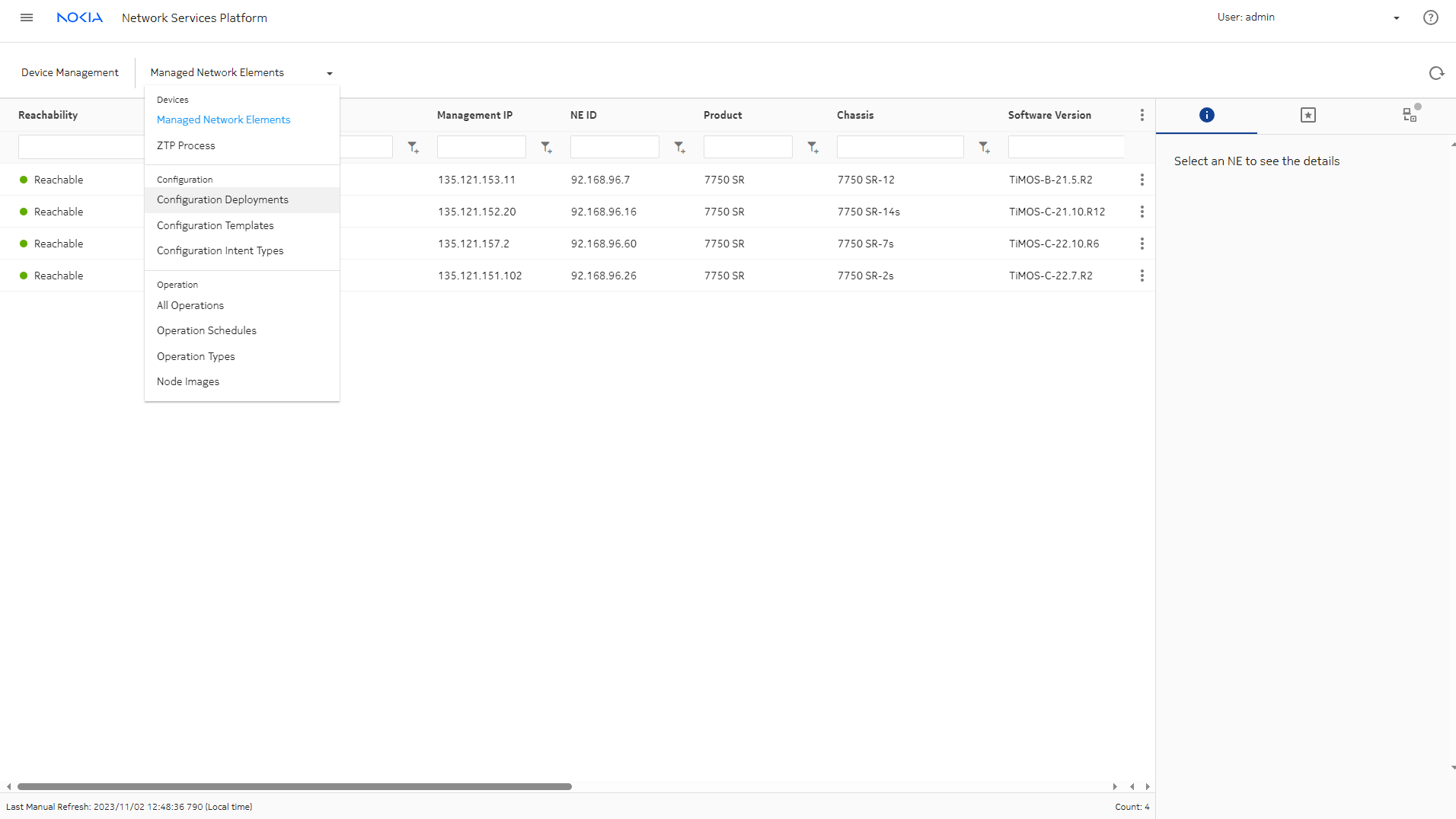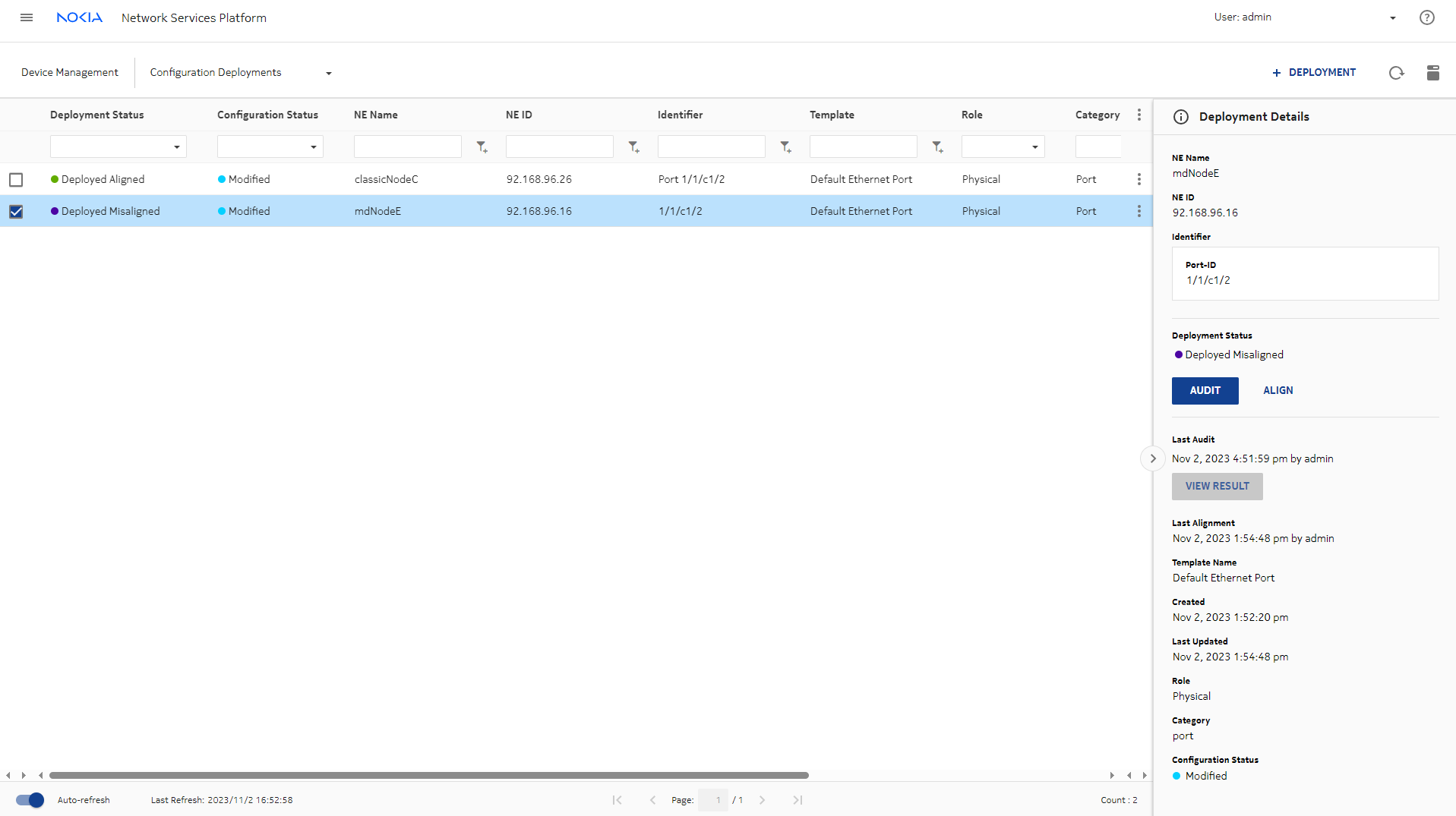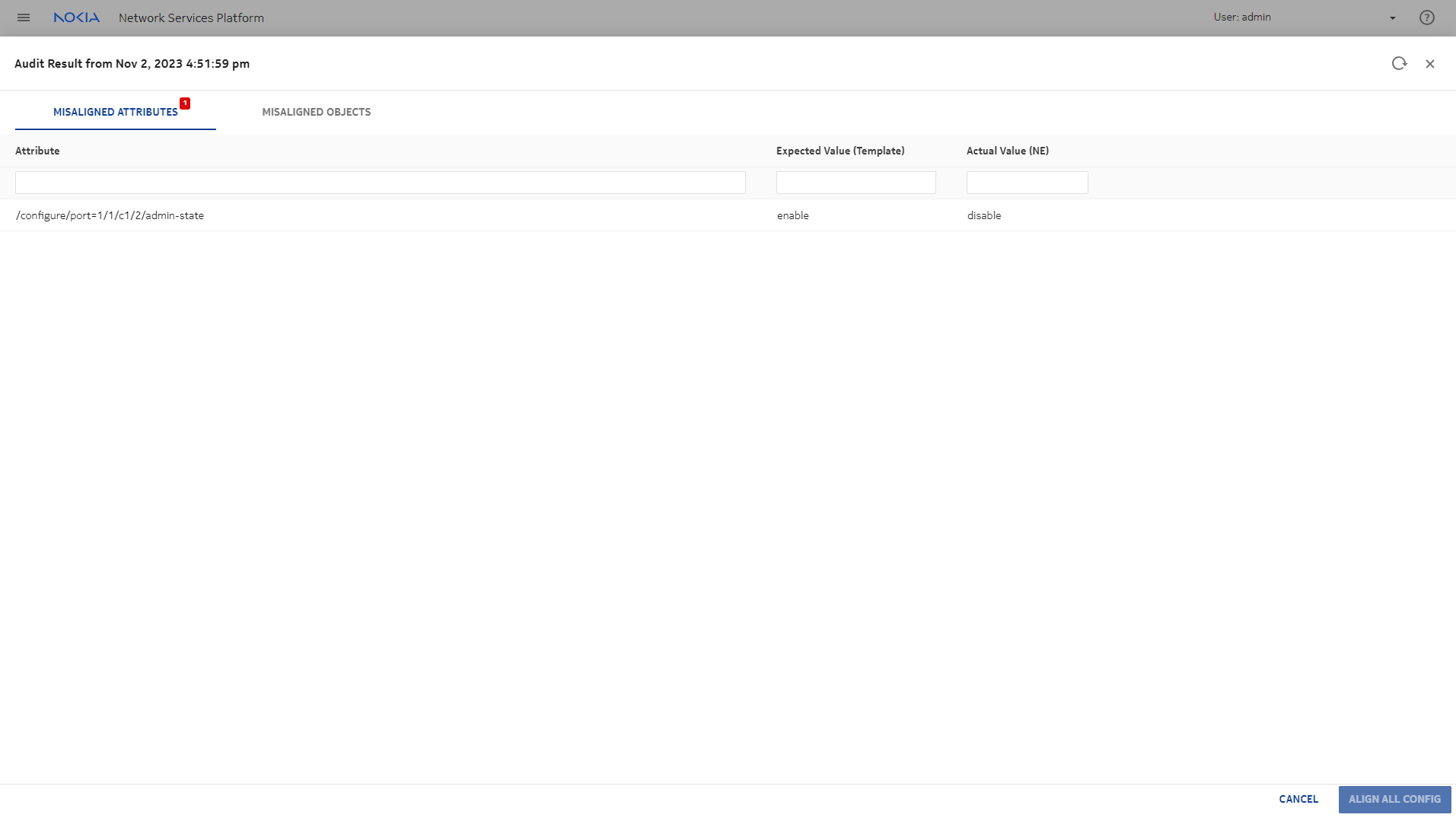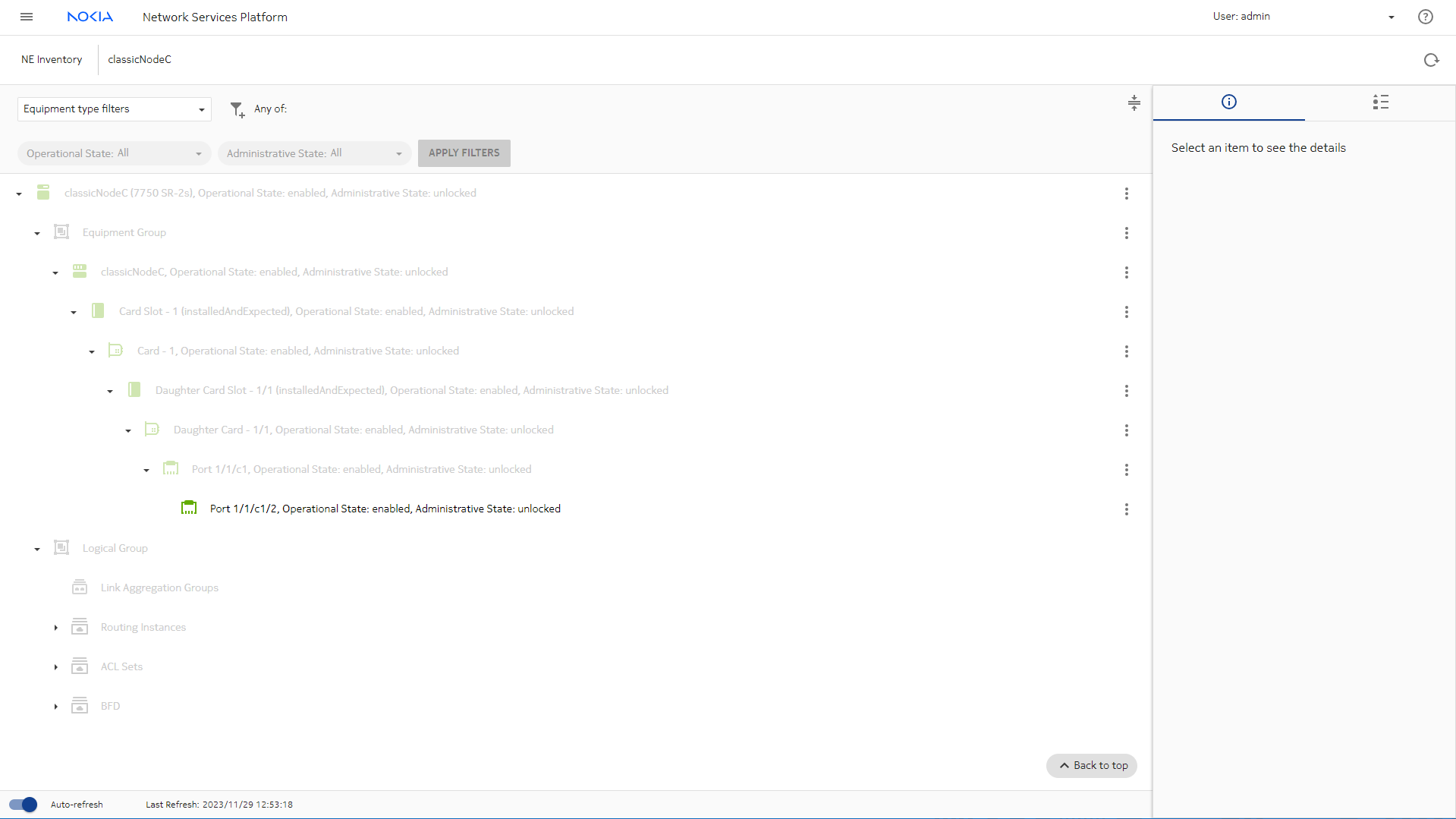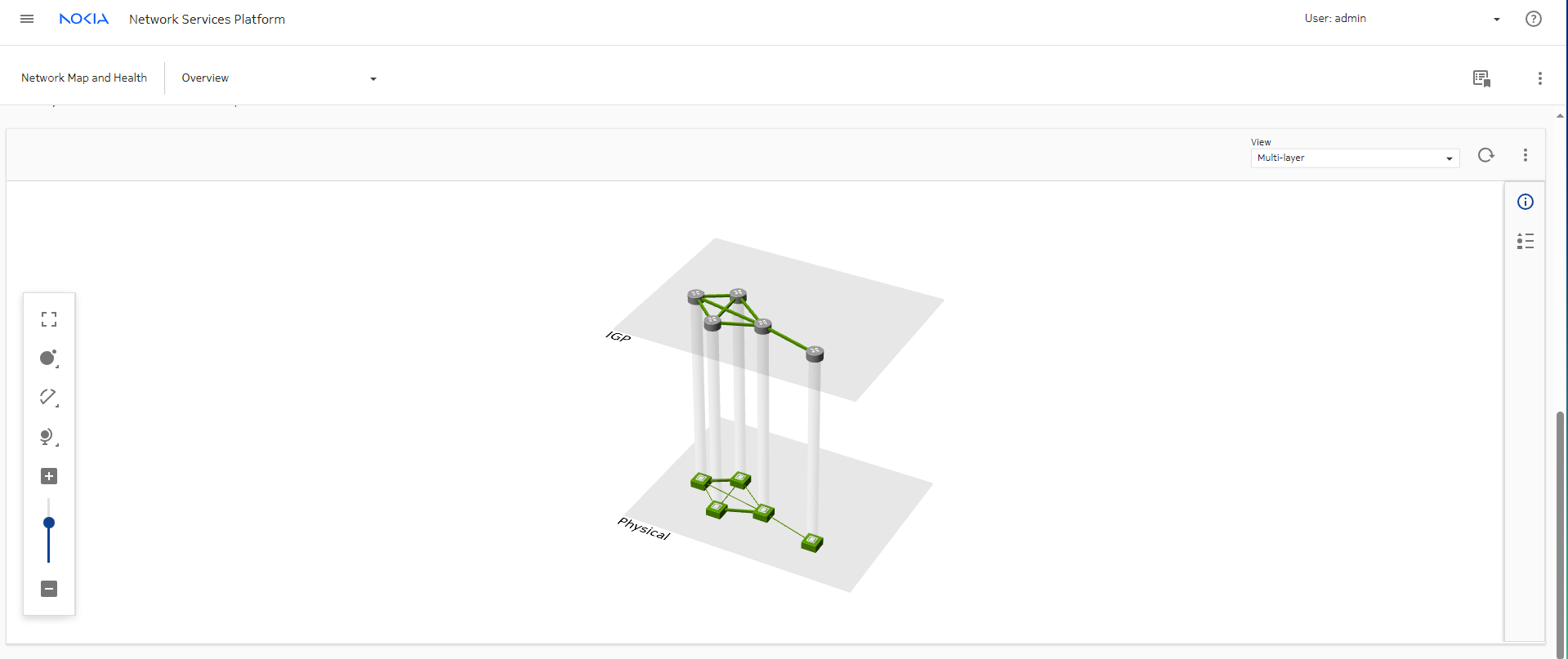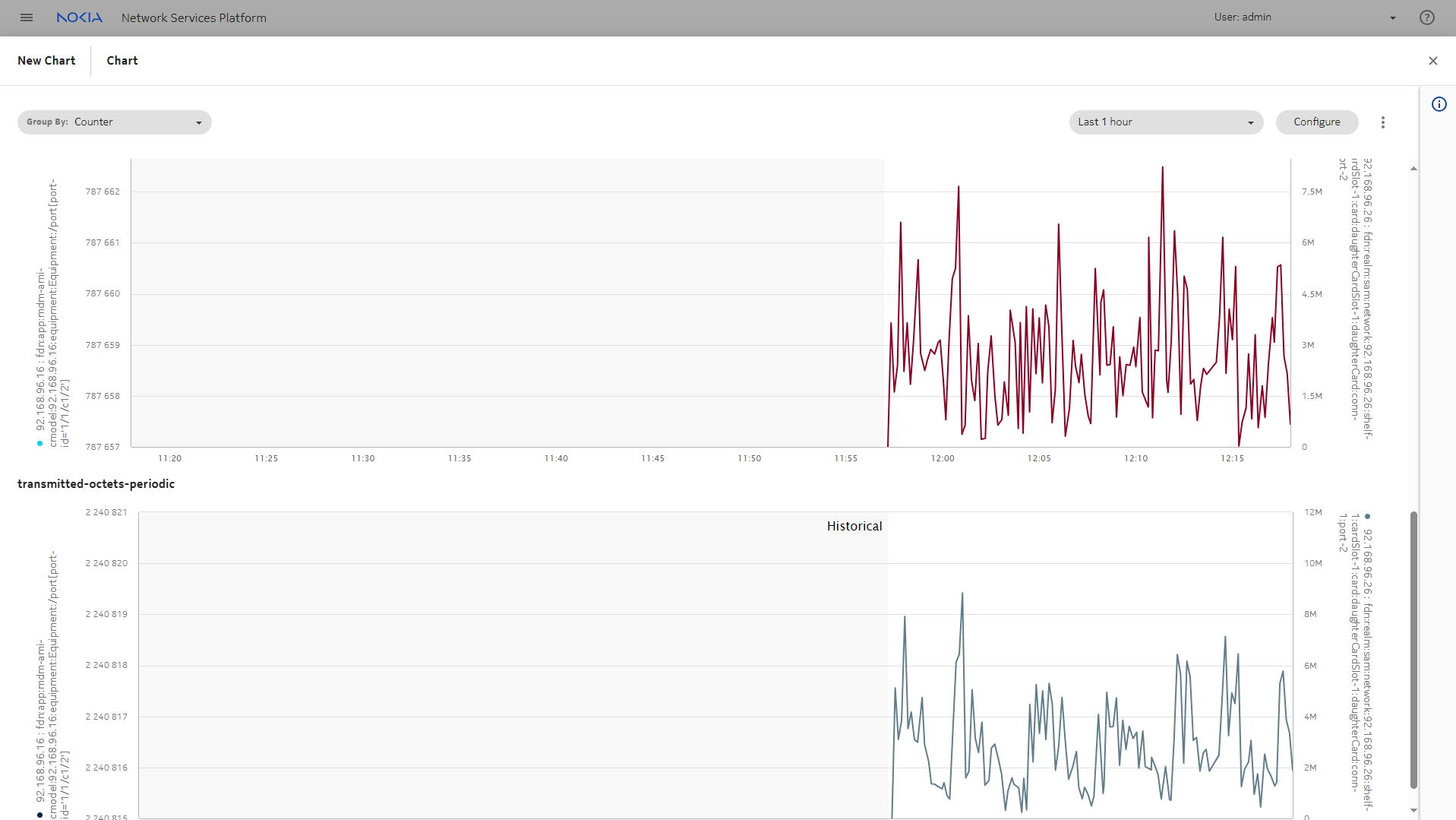End-to-end link troubleshooting scenario
Purpose
This process shows you how to use NSP in troubleshooting issues on links.
In this scenario, a link is experiencing problems.
View the Network Map
Investigate from the Object Troubleshooting dashboard
Investigate link alarms from the News Feed
Another option for investigating alarm details is to start from the News Feed. The News Feed provides a live feed of unacknowledged root cause alarms as they occur in real time. Alarm severity and number of impacts are displayed, and cross launch is available depending on the alarm. All alarms can cross launch to Current Alarms.
View port details
1 |
Returning to the Object Troubleshooting dashboard, click on one of the ports to cross launch Network Inventory to look at the status of the endpoint ports. |
